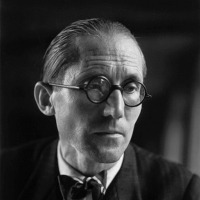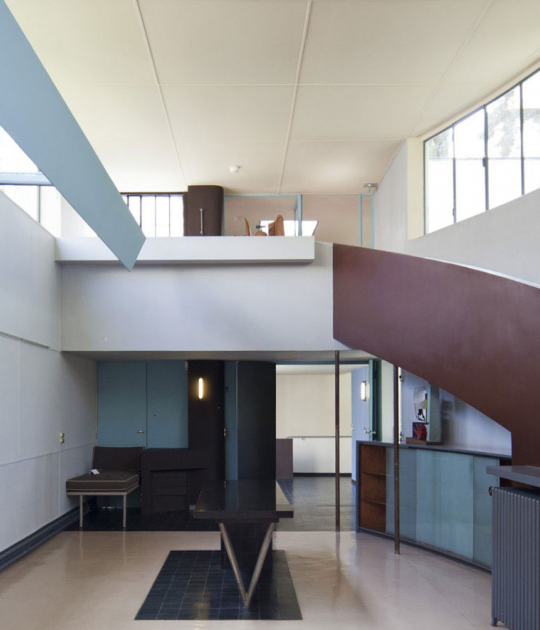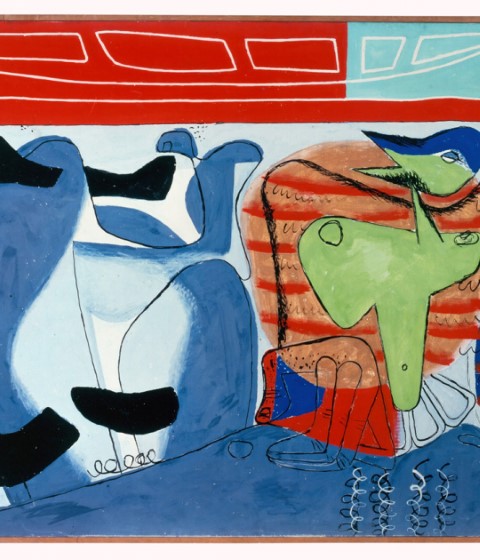Description of project by Guillermo de Osma Gallery
Charles-Édouard Jeanneret (Chaux-de-fonds, Switzerland, 1887 - Roquebrune-Cap-Martin, France, 1965), better known as Le Corbusier, was a multifaceted creator who fostered dialogue between very different disciplines, maintaining at all times a intense, rich and relevant discursive character both for the art world in general and for architecture in particular. He was an architect, urban planner, inventor, designer, philosopher, writer, poet, agitator, debater, promoter and also a painter.
"Le Corbusier. Art and Design ", which can be visited at the Galería Guillermo de Osma until March 23, proposes precisely a tour of its pictorial production and aims not only to analyze its main characteristics, but also to emphasize its importance, since both drawing and painting were crucial elements in his professional career. With this objective, the exhibition presents more than twenty works including paintings, drawings and collages, which cover the last 30 years of the artist's life.
Following the family tradition within the watch industry, Le Corbusier trained as an engraver. However, from a very early age he stood out among his classmates and following the suggestions of his teachers, he continued his training with painting studies and then architecture. His career as an architect and town planner has received unanimous recognition, but at the same time his artistic side, whether as a painter or essayist, was of great importance since the 1920s, in his collaborations with Amédée Ozenfant in the magazine L'Esprit Noveau and the elaboration of the plastic language known as the Purism. Throughout his life, Le Corbusier combined his activity as an architect with that of an artist with the same interest and dedication, as well as that of furniture designer, some of whom will be present at the exhibition.
Thus, the intention of the exhibition is to present a synthetic but clear image of its contribution in the strictly pictorial field and how, from the end of the 20s, it interprets the 'human' figure, especially the woman's body.
It should be noted that, for Le Corbusier, the painting and his workshop were a kind of secret plastic laboratory that completed his scientific vision of society and soaked it with a certain poetic air. This exhibition shows an artist seduced by nature and the metamorphosis and fruit of this seduction establishes relationships between artificial forms -which he immortalized in the "purist" compositions from 1918- and the human figure. In short, one more consequence of the anthropomorphic vision of his environment that ended up being translated into his system of proportions known as Modulor (1948).
The selected works exemplify how the study of nature and the human figure triggers a significant interest in a series of formal derivatives that lead to compositional deformations, figurative superpositions and stylistic combinations, all of them extraordinary. In fact, these experiments will help Le Corbusier to broaden his thematic vocabulary from mutations that
"show the figurative contamination that comes from the dead nature to the bull and from it to the woman or vice versa", as explained by the architect and Doctor in Theory and History of Architecture, Marisa García Vergara, in her catalog text.
This exhibition presents us with a creator of exceptional forms that, beyond his constant work in harmoniously bringing architecture closer to industrial civilization, also proposed a new way of seeing art, always working from the interdisciplinary knowledge of an inquisitive, curious and humanist.
Along with the works of art will present some of the original furniture of the time that Le Corbusier began to design with Pierre Jeanneret and Charlotte Perriad from 1925. In this sense they emphasize the Fauteuil B (1928), the Siège à dossier basculant Mob. B 301 (1928-29), or the furniture of the Pavillon Suisse Apartment, 1933.
On the occasion of the exhibition, a catalog with text by Marisa García Vergara has been published, in which all the pieces selected for the exhibition have been reproduced.




























